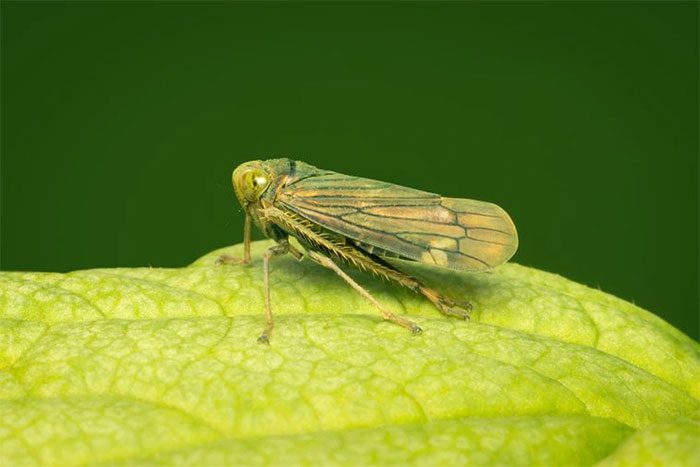In science, even the smallest and seemingly ordinary creatures can inspire great technological innovations, such as the leafhopper.
This insect is ubiquitous in our lives, yet it “shines” in its own unique way.
Specifically, it secretes mysterious tiny particles known as brochosomes, which provide them with a robust form of protection in nature.
A recent study from the University of Pennsylvania (USA) explored this fascinating natural armor, paving the way for potential future cloaking devices or next-generation technologies.

Leafhoppers inspire scientists to create cloaking technology. (Illustrative photo: SP).
The Secret of Brochosomes
Scientists have known about brochosomes since the 1950s. These nano structures resemble soccer balls, with a diameter of approximately 20μm, always intriguing researchers.
A team from the University of Pennsylvania spent years studying the geometry, properties, and applications of brochosomes in science and technology.
After creating a basic synthetic version of brochosomes in 2017, Professor Tak Sing Wong and his team achieved a remarkable milestone: they recreated an extremely tiny model and complex structures for the first time using 3D printing.
Discoveries for the Future
This reveals an extraordinary characteristic. The research team explains: “So far, it is still unclear why this insect produces such complex structured particles. The brochosomes created in the lab can reduce light reflection by up to 94%.
This is a significant discovery, as it is the first time we see nature manipulating light in its own unique way.”
The complex structure of brochosomes allows them to absorb both visible light and ultraviolet rays, promising many applications in nature.
This unique optical property enables the leafhopper to effectively escape predators through natural invisibility. This insect can even evade the sight of birds and reptiles, thanks to brochosomes.
Great Technological Prospects
The research team is now looking to improve the production process of synthetic brochosomes, hoping to bring them closer to their actual size, which could lead to a technological revolution.
They enable scientists to perform unprecedented optical techniques. Producing low-bandwidth filters with very short wavelengths and complex geometries inspired by leafhoppers could yield many applications in the future.
Some of these include the manufacturing of solar panels, pharmaceutical packaging, and even more effective sunscreens.
Additionally, it helps scientists encode information, which can then only be displayed under certain light waves.
Researchers are also considering developing cloaking devices or camouflage technology directly inspired by leafhoppers.
This could potentially help conceal the heat signatures of humans or machines. This research once again proves that nature is an endless source of creativity: “It is like a great teacher, helping us develop new materials.
In this study, we focused on just one species, but there are many other incredible insect species in the world waiting for us to explore. They are not just organisms but sources of inspiration“, the team of scientists expressed their hopes.


















































